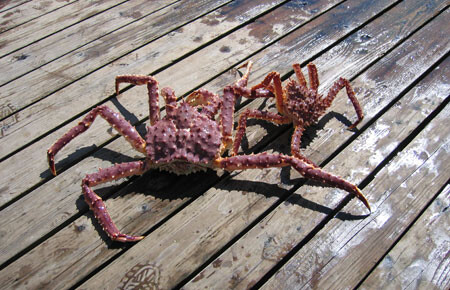Recent genetic research has unveiled significant diversity among Alaska's red king crab populations, indicating a potential resilience to climate change and shifting ocean conditions.
Historically, red king crab represented Alaska's premier shellfish fishery, deeply embedded in the state's maritime culture and global culinary traditions. However, the fishery experienced a collapse in the 1980s, leading to a statewide decline in populations and the closure of the Gulf of Alaska fishery since 1983.
Wes Larson, co-author of the study and genetics program manager at NOAA's Alaska Fisheries Science Center, emphasized the importance of understanding population structure and local adaptation in addressing crab biomass declines and aiding recovery efforts. He noted the increasing engagement of fishermen, processors, and community members in these issues, which is driving innovative research shared Alaska Sporting Journal.
The research team, including collaborators from Cornell University, the University of Alaska Fairbanks, the Alaska Department of Fish and Game, and NOAA's Alaska Fisheries Science Center, employed whole genome sequencing to analyze red king crab from various Alaskan regions. This comprehensive approach provided a detailed understanding of genetic differences across locations.
The findings revealed substantial genetic structure within populations and diversity between regions, sometimes between populations separated by only a few hundred kilometers. This previously undocumented diversity suggests that red king crab may possess greater resilience to environmental changes, such as ocean warming. However, the study cautions that efforts to enhance crab populations should be carefully managed to preserve this genetic diversity.
This research shows the importance of genetic diversity in species resilience and highlights the need for informed management strategies to support the recovery and sustainability of Alaska's red king crab populations.







